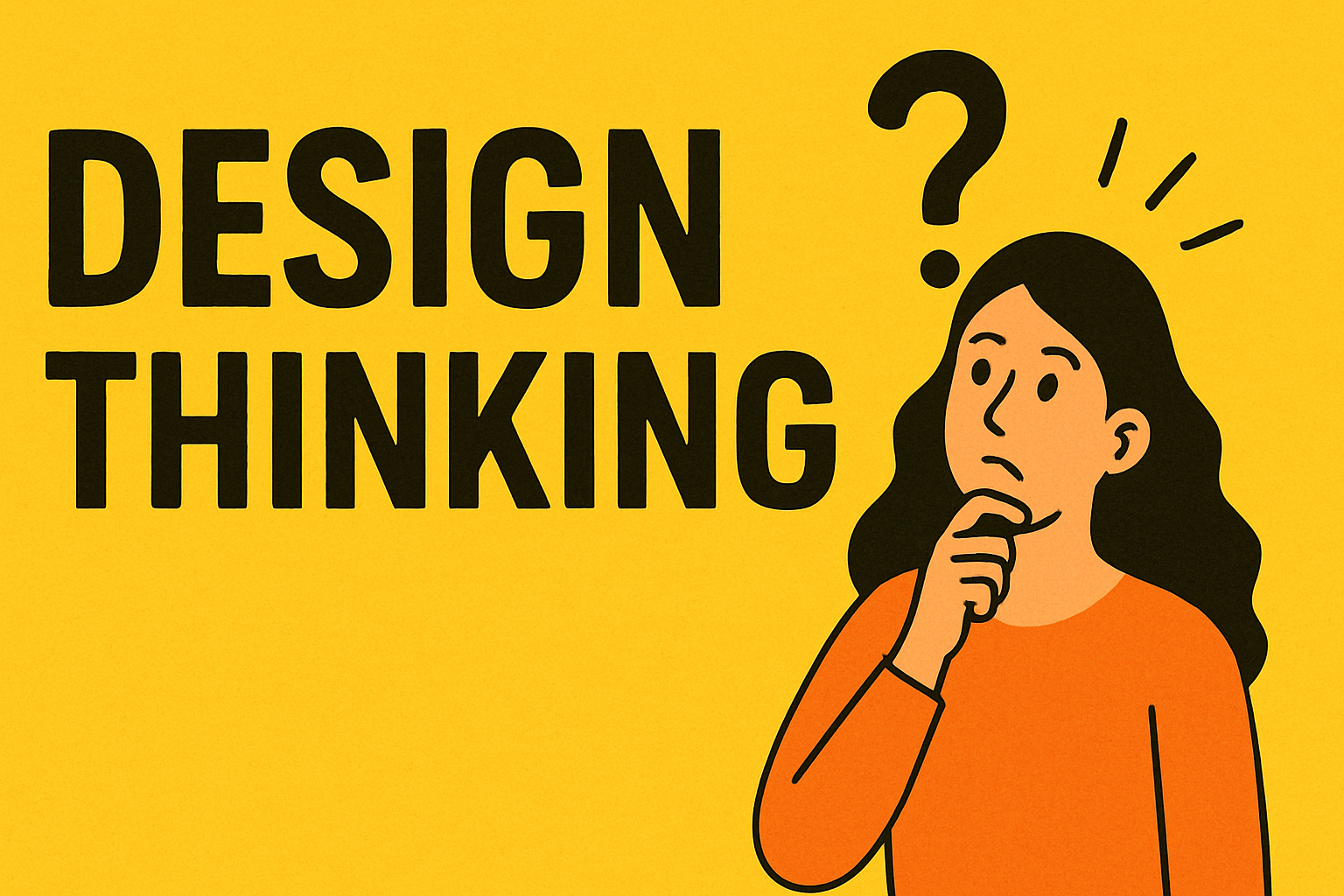Once a complete stranger to the world of design thinking, I did a bit of research to familiarize myself with this new term.
I am inviting you to watch this Ted Talk of Tim Brown, the godfather of design thinking. The CEO of IDEO talks about the difference between design and design thinking, and just how far design thinking can bring you. From global warming to education to clean water, we have used design thinking to address and inform others on these issues.
To start off: what even is design thinking? Well, Fast Company called it “a proven and repeatable problem-solving protocol” that anyone in any field can use to get extraordinary results. In simpler terms: a method that helps us move beyond just fixing the obvious.
Now, the Interaction-Design Foundation (IxDF) lays out five core stages of design thinking: Empathize, Define, Ideate, Prototype, and Test. These steps, however, aren’t in order. Think of these as modes you can bounce around in – you can start empathizing, jump to prototyping early, then loop back to define again.
Let’s break them down!
- Empathize: diving into understanding real people—their motivations, frustrations, quirks. It’s much more than a survey; it’s stepping into someone’s shoes!
- Define: Next, you take those raw insights and frame the right problem. Not to “make things cheaper”, but instead “how might we…”
- Ideate: It’s time to brainstorm! With wide-open thinking, let you imagination roam, and start to filter what might really work.
- Prototype: Building something, even just a sketch or wireframe, to test in the real world.
- Test: Try it out! See where it breaks, ask people what they think, and be ready to go back and iterate.
IxDF also notes that design thinking is best when tackling “ill-defined or complex problems“, not ones we already know how to solve! Design thinking also encourages both divergent and convergent thinking, opening our brains up to multiple processes of thinking!
While researching, I also came across a newer perspective: while design thinking has been everywhere for a while, its corporate love affair might be cooling. Fast Company recently shared that mentions of “design thinking” in job posts have dropped significantly in some fields—and that maybe a new mindset, like “community-powered transformation,” is emerging.
But here’s the thing: regardless of the label’s popularity, the spirit of design thinking—deep empathy, creativity, iteration, and staying human-centered—is still golden! Many top designers today have built real results by immersing teams in herds of ideas, prototyping fast, using sticky notes, and collaborating beyond hierarchy. It’s the way creative teamwork becomes structured yet playful, and helps companies succeed!
And beyond media and tech, the approach is influencing areas like legal services—making contracts more user-friendly, designing for accessibility, and transforming how people interact with systems, according to Financial Times!
So, bottom line—if you ask me, design thinking isn’t just for designers – it’s for anyone tackling messy challenges, wanting to connect with real human needs, and eager to keep learning by doing. It’s messy, iterative, and a bit chaotic—but that’s where the breakthroughs hide.
I tried it myself in a fast-paced design sprint I did with a partner, which you can view here.
I would highly recommend to give design thinking a try, and let me know how it unfolds for you!

Leave a Reply